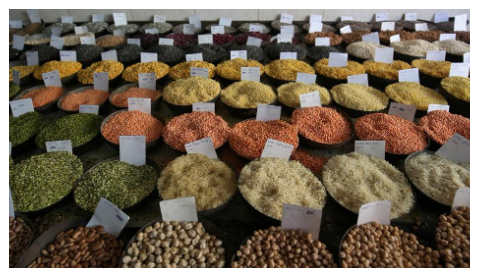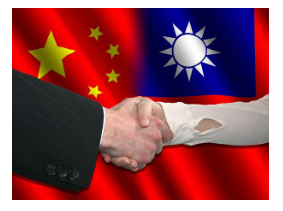Friday, 19th January 2024
Implications of Absent Snowfall in Kashmir
In News: Snowfall Shortage in Kashmir is Impacting the Tourism, Environment, and Economy
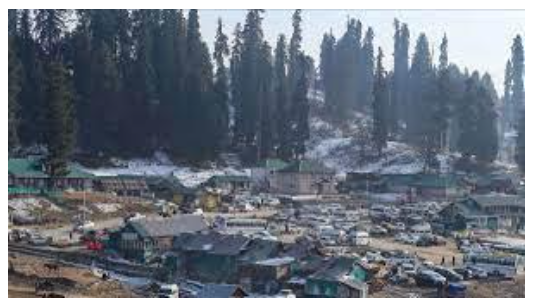
Causes of Snowfall Absence in Kashmir
- Climate and Weather Patterns
- The Jammu and Kashmir, and Ladakh regions experienced a significant deficiency in rainfall and snow during this winter season.
- December 2023 recorded an 80% rainfall deficit, and January 2024 has seen a complete absence of rain.
- Decline in Western Disturbance
- The diminishing trend in snowfall is linked to a decrease in Western Disturbance events and rising temperatures, possibly influenced by Climate Change.
- Western Disturbances, crucial for winter precipitation in the Himalayan region, have been on the decline, impacting overall winter precipitation.
- Role of Climate Change and El Nino
- Climate change contributes to the declining snowfall in Kashmir, with higher temperature increases in upper elevations affecting snowfall.
- The current El Nino event in the Pacific Ocean adds to the global atmospheric changes, contributing to the precipitation deficit in the region.
Implications of No Snowfall in Kashmir
- Short and Long Term Impact
- Short-term effects include increased forest fires, agricultural drought, and reduced crop production.
- Long-term consequences involve decreased hydroelectricity generation, glacier melting, and adverse effects on drinking water supply due to reduced groundwater recharge.
- Vital for Winter Crops
- Winter snow is crucial for moisture in the soil, vital for winter crops, especially horticulture.
- The absence of sufficient snowfall adversely affects yields of apples and Saffron, significant contributors to the local economy.
- Impact on Tourism
- Gulmarg, a key winter tourism spot, experiences a sharp decline in tourist visits due to insufficient snow.
- Despite substantial tourist numbers in 2023, officials project at least a 60% reduction in footfall, adversely affecting ski resorts and related businesses, impacting the local economy.
|
UPSC Previous Year Questions Prelims (2017) Q. With reference to ‘Indian Ocean Dipole (IOD)’ sometimes mentioned in the news while forecasting Indian monsoon, which of the following statements is/are correct?
Select the correct answer using the code given below: (a) 1 only Ans: (b) Mains (2014) Q. Most of the unusual climatic happenings are explained as an outcome of the El-Nino effect. Do you agree? |
Source: IE
Government Employment Opportunities for Individuals Acquitted in Criminal Cases
In News: The Punjab and Haryana High Court has instructed the Central government to review the appointment of a Haryana resident as an Indo-Tibetan Border Police (ITBP) constable.
Concerning Case: Appointment Revocation of Constable with Criminal Acquittal
- Appointment Revocation
- A constable, appointed on compassionate grounds in 2022, faced the cancellation of his appointment due to his acquittal in a 2018 criminal case under Section 4 of the POCSO Act, 2012, involving penetrative sexual assault.
- Additional charges under various sections of the Indian Penal Code, 1860, including poison-related offenses, kidnapping, and criminal intimidation, led to the threat of appointment revocation.
- Despite being acquitted by a Kaithal Court (Haryana) in 2019, the Ministry of Home Affairs enforced a policy for Central Armed Police Forces (CAPF) appointments, scrutinizing individuals with criminal cases, even if acquitted later.
Mandates for Appointing Individuals with Criminal Cases in Public Jobs
- Supreme Court Rulings
- The Supreme Court, in the case of Avtar Singh vs. Union of India (2016), mandated truthful disclosure of a candidate's criminal history to the employer.
- Convictions, especially in non-trivial cases, can result in candidature cancellation or termination.
- Acquittals in cases of moral turpitude or serious offenses warrant a thorough assessment by the employer to determine the candidate's suitability.
- In Satish Chandra Yadav vs. Union of India (2023), the court emphasized that acquittal in a criminal case does not automatically guarantee appointment; the employer retains the discretion to consider antecedents.
Protection of Children From Sexual Offences (POCSO) Act, 2012
- Overview and Amendments
- Enacted on November 14, 2012, in response to India's ratification of the UN Convention on the Rights of the Child in 1992.
- Addresses sexual exploitation and abuse of children, providing punishment based on the gravity of the offense.
- Amended in 2019 to introduce harsher penalties, including the death penalty, to deter perpetrators of sexual crimes against children.
- The Government of India notified the POCSO Rules, 2020.
Key Features
- Gender-Neutral Nature: Recognizes both girls and boys as potential victims, ensuring equal protection.
- Ease in Reporting: Encourages reporting of child sexual exploitation cases, making non-reporting a specific offense.
Source: IE
Global Surgery
In News: Global surgery is the overlooked aspect of global health, with South Asia, having the world's largest population lacking access to essential surgery, experiencing particularly alarming neglect.
Understanding Global Surgery
- Overview
- Global surgery aims to ensure Equitable Access to Emergency and essential surgery, focusing on both Low- and Middle-Income Countries (LMICs) and addressing disparities in high-income countries (HICs).
- It encompasses critical procedures like surgery, obstetrics, trauma, and anaesthesia (SOTA).
- Historical Transformation
- In 2015, recognized as the "Annus Mirabilis" for global surgery, key developments occurred.
- The Disease Control Priorities Network (DCPN) report, sponsored by the World Bank (WB), emphasized the cost-effectiveness of essential surgery.
- The Lancet Commission on Global Surgery (LCoGS) assessed global surgical care access and proposed strategies like the National Surgical, Obstetrics, and Anaesthesia Plan (NSOAP).
- The World Health Organization (WHO) Declaration on Safe Surgery (WHO Resolution 68.15) emphasized the role of surgical systems in achieving Universal Health Coverage.
Challenges and Disparities in Global Surgery
- Inaccessibility
- Over 70% of the global population lacks timely access to safe and affordable surgical care.
- In Low- and lower-middle-income countries (LLMICs), 99% and 96% face access gaps, compared to 24% in high-income countries (HICs).
- In South Asia, over 98% lack access to safe and affordable surgical care.
- Disease Burden
- Surgically treatable conditions caused around 17 million deaths in 2010, surpassing the combined mortality burden of HIV/AIDS, Tuberculosis, and Malaria.
- LMICs have over 77 million surgically avertable Disability-Adjusted Life-Years (DALY), with South Asia contributing significantly.
- Economic Burden
- The absence of scaling up surgical care may result in a cumulative loss of USD 20.7 trillion to global GDP by 2030.
- Annual loss in societal welfare is estimated at USD 14.5 trillion, with South Asia contributing about 7%.
- Limited Representation in Reports
- Surgery contributes to less than 1% of indicators in major international health reports, impacting prioritization in global health initiatives.
- Neglect in National Policy Making
- National Health Strategic Plans often lack emphasis on surgery, hindering comprehensive healthcare system development.
- Research Disparities
- Significant research attention and funding gaps exist between global surgery and broader global health topics.
- Limited 'global surgery' titles in databases like PubMed highlight the need for more evidence-based practices.
- Interconnected Challenges
-
- Neglect in one aspect, such as policy or research, can perpetuate neglect in other areas, creating a cycle of under prioritization.
Path Forward for Global Surgery
- Promoting Research and Innovation
- Support and promote research in global surgery to create evidence-based practices, innovations, and solutions.
- Prioritize research funding for surgical interventions, outcomes, and healthcare delivery models adaptable to resource-limited settings.
- National Commitment through NSOAPs
- Encourage countries to develop and implement National Surgical, Obstetrics, and Anaesthesia Plans (NSOAPs) to showcase commitment to enhancing surgical care nationally.
- NSOAPs serve as a roadmap for fortifying surgical systems, improving infrastructure, and bolstering the surgical workforce.
- Sustainable Financing Advocacy
- Advocate for sustained and increased financing for surgical care.
- Develop funding mechanisms that prioritize surgical infrastructure, training, and service delivery.
- Engage with international donors, governments, and philanthropic organizations to allocate resources for global surgery initiatives.
Source: TH
ASER 2023
In News: As per ASER 2023, within rural communities, 25% find it challenging to read a text equivalent to a Class 2 level in their regional language.

Overview of ASER 2023
- ASER Background
- ASER surveys, conducted by NGO Pratham since 2005, track trends in school enrollment, attendance, and literacy and numeracy skills among children aged 6 to 14.
- These reports are instrumental in shaping government policies.
- Survey Details
- ASER 2023 covered 28 districts across 26 states, reaching 34,745 youths aged 14-18.
- One rural district was surveyed in each major state, except Uttar Pradesh and Madhya Pradesh, where two districts were surveyed.
- The survey focused on four points, including basic reading, math, and English abilities, application of skills to everyday calculations, reading and understanding instructions, and financial calculations.
Findings of ASER 2023
- Trends in Basic Learning
- Among those aged 14-18, 26.5% couldn't read a Class 2-level textbook in their regional language, and 42.7% struggled with sentences in English.
- Of those who could read, 26.5% did not comprehend the meaning.
- More than half (56.7%) couldn't solve a simple 3-digit by 1-digit division problem.
- Arithmetic Proficiency
- 45% demonstrated basic arithmetic proficiency, while others need improvement for everyday calculations.
- Application of Basic Skills
- 85% could measure length using a scale from 0 cm, but this dropped to 39% with a shifted starting point.
- A decline compared to 2017.
- Enrollment in Different Streams
- 55.7% of youths were enrolled in Arts/Humanities, followed by STEM (31.7%) and Commerce (9.4%).
- More males enrolled in STEM (36.3%) than females (28.1%).
- Smartphone Usage
- Around 89% had a smartphone, with 92% knowing how to use it.
- Males more likely to own smartphones and spend more time on them.
- Social Media Usage
- 90.5% reported using social media, with slightly more males (93.4%) than females (87.8%).
- About half were familiar with online safety settings.
Significance of ASER 2023
- Long-standing Deficiencies
- ASER reports for nearly two decades highlight deficiencies in foundational skills, even at higher education levels.
- Learning Gaps Persist
- The report emphasizes that children struggle with basic skills well into their teenage years, impacting their readiness for the job market.
Source: IE
Cabo Verde Declared a Malaria-Free Country
In News: Cabo Verde has recently been officially recognized by the World Health Organization (WHO) as a country that has successfully eliminated Malaria.
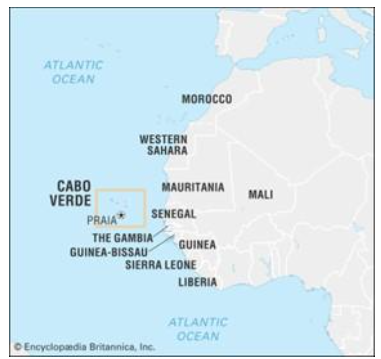
Malaria Elimination Certification Process
- Certification Criteria
- WHO grants malaria-free certification to a country when it demonstrates the interruption of nationwide malaria transmission for a continuous period of at least 3 years.
- The country must have a fully functional surveillance and response system to prevent the re-establishment of indigenous transmission.
- Global Recognition
- Currently, WHO has acknowledged 43 countries and 1 territory as officially 'malaria-free.'
- In the South East Asian Region, Maldives (2015) and Sri Lanka (2016) have received WHO certification.
- India, however, has not yet achieved the status of being malaria-free.
Understanding Malaria
- Definition and Causes
- Malaria is a life-threatening blood disease transmitted through the bite of infected mosquitoes carrying Plasmodium parasites.
- Among the five Plasmodium species causing malaria in humans, P. falciparum and P. vivax pose the greatest threat.
- Geographical Prevalence
- Predominantly found in tropical and subtropical regions of Africa, South America, and Asia.
- Transmission Mechanism
- Spread occurs through the bite of an infected female Anopheles mosquito.
- The mosquito becomes infected by biting an individual with malaria, and when it bites another person, the parasites enter their bloodstream, mature in the liver, and infect red blood cells.
- Symptoms and Cure
- Symptoms include fever, flu-like illness, shaking chills, headache, muscle aches, and fatigue.
- Malaria is both preventable and curable through timely intervention and appropriate medications.
|
UPSC Previous Year Questions Prelims (2010) Q. Widespread resistance of malarial parasite to drugs like chloroquine has prompted attempts to develop a malarial vaccine to combat malaria. Why is it difficult to develop an effective malaria vaccine? (a) Malaria is caused by several species of Plasmodium Ans: (b) |
Source: DTE
World Economic Forum
In News: The Annual Meeting of the World Economic Forum (WEF) is taking place in Davos, Switzerland, from January 15th to January 19th, 2024.
Overview of the World Economic Forum (WEF)
- Introduction
- WEF serves as the International Organization for Public-Private Cooperation, engaging prominent leaders across various sectors to influence global, regional, and industry agendas.
- Headquartered in Geneva, Switzerland.
- Foundation and Concept
- Founded in 1971 by Klaus Schwab, originally named the European Management Forum.
- Schwab introduced the concept of "stakeholder capitalism," emphasizing long-term value creation and considering the needs of all stakeholders and society.
- Evolution of Focus
- Events in 1973 led to a shift from management to economic and social issues.
- In 1975, membership for the world's top 1,000 companies was introduced.
- In 1987, it officially became the World Economic Forum, broadening its vision to provide a platform for global dialogue.
- Formally recognized as an international organization in 2015.
- Funding
- Primarily supported by partnering corporations with annual turnovers exceeding USD 5 billion.
- Annual Meeting in Davos
- The Davos Annual Meeting brings together approximately 3,000 participants, including investors, business leaders, political figures, economists, and celebrities.
- Over 500 sessions are conducted to discuss global issues.
Key Diplomatic Moments at WEF
- Korean Diplomacy
- Davos witnessed the first ministerial-level meetings between North and South Korea.
- German Reunification (1989)
- East German Prime Minister and German Chancellor met at WEF to discuss reunification.
- South African Milestone (1992)
- South African President de Klerk, Nelson Mandela, and Zulu prince Mangosuthu Buthelezi made their inaugural joint appearance outside South Africa, marking a significant milestone in the country's political transition.
- G20 Genesis (1998)
- WEF emphasized the involvement of major developing countries, contributing to the emergence of the G20 concept initially limited to finance ministers.
Major Reports by WEF
- WEF regularly publishes globally recognized reports, including the Global Competitiveness Report, Global Gender Gap Report, Energy Transition Index, Global Risk Report, and Global Travel and Tourism Report.
|
UPSC Previous Year Questions Prelims (2017) Q. Which of the following gives ‘Global Gender Gap Index’ ranking to the countries of the world? (a) World Economic Forum Ans: (a) Prelims (2009) Q2. Who among the following is the founder of World Economic Forum? (a) Klaus Schwab Ans (a) Prelims (2019) Q3. The Global Competitiveness Report is published by the (a) International Monetary Fund Ans: (c) |
Source: IE
NHAI Introduces 'One Vehicle, One FASTag' Initiative
In News: The National Highways Authority of India (NHAI) has introduced the 'One Vehicle, One FASTag' initiative, designed to discourage the practice of using a single FASTag for multiple vehicles or associating multiple FASTags with a specific vehicle.
Understanding FASTag
- Introduction
- FASTag is a technological device utilizing Radio Frequency Identification (RFID) for seamless toll payments while a vehicle is in motion.
- NHAI has introduced two mobile apps, namely MyFASTag and FASTag Partner, to enhance the accessibility of FASTags.
- The tag remains valid for five years from the date of issuance and is available in seven different color codes
Benefits of FASTag
- For Road Users
- Allows near non-stop motion through toll plazas.
- Provides convenience for cashless toll fee payment.
- Contributes to reduced traffic congestion and shorter commute times.
- For Toll Operator
- Reduces operating costs.
- Enhances audit control through centralized user accounts.
- Improves capacity without the need for additional infrastructure.
- For Government
- Promotes fuel savings and reduces emissions from idling and repeated stops at toll plazas.
- Enhances transparency in toll transactions.
National Highways Authority of India (NHAI)
- Background
- NHAI was established by an Act of Parliament in 1988 under the administrative control of the Ministry of Road Transport and Highways.
- It operates as a central authority mandated to develop, maintain, and manage the National Highways assigned by the Government of India.
- Operational Commencement
- Although constituted in 1988, NHAI became operational in February 1995.
- Structure
Comprises a full-time Chairman, along with a maximum of five full-time Members and four part-time Members appointed by the Central Government.
|
UPSC Previous Year Questions Prelims (2022) Q. Consider the following communication technologies:
Which of the above are considered Short-Range devices/technologies? (a) 1 and 2 only Ans: (d) |
Source: PIB
Who Are Shankaracharyas?
In News: The four Shankaracharyas have recently announced their decision not to participate in the inauguration ceremony of the Ram temple in Ayodhya.
Understanding Shankaracharyas
- Title and Origin
- Shankaracharya, meaning 'teacher of the way of Shankara,' is a religious title held by the heads of the four Hindu maths (monasteries) founded by the eighth-century saint Adi Shankara.
- Establishment and Purpose
- Adi Shankara established these maths with the primary purpose of imparting knowledge.
- Each math comprises religious shrines, temples, libraries, and residential quarters.
- Geographical Locations
- The four maths are situated in Dwarka (Gujarat), Joshimath (Uttarakhand), Puri (Odisha), and Sringeri (Karnataka).
- Responsibilities of Maths
- Each math, known as peetha or pitha in Sanskrit, is assigned the task of serving as the custodian of one Veda and preserving Vedic literature.
- Govardhan Math in Puri oversees the Rig Veda.
- Dwarka Sharada Peetham in Gujarat is responsible for the Sam Veda.
- Sringeri Sharada Peetham in Karnataka manages the Yajur Veda.
- Jyotir Math in Joshimath, Uttarakhand, is entrusted with the Atharva Veda.
- Patronage and Historical Significance
- The Vijayanagara kingdom was the first to provide patronage to the Sringeri math in the 14th century CE.
- Dashanami Sampradaya Oversight
- The Shankaracharyas also supervise the Dashanami Sampradaya, an order of renunciates who have chosen to renounce the secular way of life.
Source: IE
Scheme for Residential Education for Students in High Schools in Targeted Areas (SHRESHTA)
In News: The Central Board of Secondary Education (CBSE) has recently provided guidelines for Residential Private Schools expressing interest in becoming a part of the SHRESHTA Scheme.
Scheme for Residential Education for Students in High Schools in Targeted Areas (SHRESHTA)
- Objective
- The scheme aims to grant meritorious students from Scheduled Caste (SC) communities access to the best private residential schools.
- Targeted Classes
- Provides scholarships for students from SC communities to pursue education in private and NGO-run residential schools, specifically for Classes 9-12.
- Expected Impact
- Anticipates offering admissions to approximately 3,000 students annually in Classes 9 and 11.
- Core Objectives
- Enhance the government's development initiatives by addressing service gaps in education in SC dominant areas.
- Collaborate with voluntary organizations to create an environment conducive to the socio-economic upliftment and overall development of SC communities.
- Implementation Agency
- The Department of Social Justice and Empowerment under the Ministry of Social Justice & Empowerment.
Implementation Modes
- SHRESHTA Schools
- Involves the best CBSE/state board-affiliated private residential schools.
- Selection of outstanding SC community students through the National Entrance Test for SHRESHTA (NETS).
- Admissions for education in Classes 9 through 12.
- School selection based on a performance score of above 75 percent pass rate in Class 10 and 12 board examinations over the past three years.
- NGO and Voluntary Organization-Run Schools and Hostels
- Includes institutions operated by NGOs and voluntary organizations up to Class 12.
- Eligibility Criteria
- Students with annual parental income less than Rs 2,50,000 and belonging to SC communities.
- Eligible candidates are those who have passed or are appearing in Class VIII/X in the current academic session, applying for admission to Class IX/XI.
- Financial Coverage
- The scheme covers tuition fees, hostel fees, and mess fees for qualifying students.
- Students have the flexibility to choose from various schools based on merit.
Source: FPJ
Chang'e 6 Mission
In News: The China National Space Administration (CNSA) has recently declared that the Chang'e 6 sample return mission is progressing as planned and is expected to achieve a lunar surface landing in the first half of 2024.
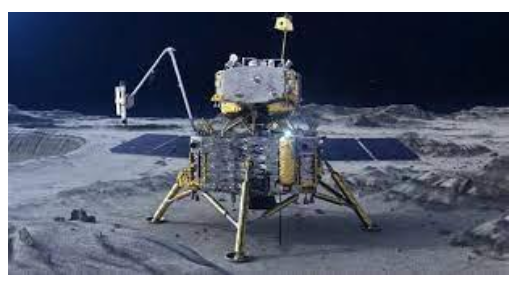
Chang'e 6 Mission Overview
- Objective
- The Chang'e 6 mission is a planned lunar lander aiming to retrieve samples from the lunar south pole.
- Mission Components
- Landing and Sample Collection
- Intends to land on the Moon's surface, collect lunar samples, and bring them back to Earth.
- The collected samples are pivotal for advancing our understanding of the Moon's geological mysteries.
- Far Side Exploration
- Marks the initial endeavor to retrieve samples from the far side of the Moon.
- Aims to gather up to two kilograms of lunar samples, employing a configuration similar to the successful Chang'e 5 mission.
- Landing and Sample Collection
- International Collaboration
- The mission involves collaboration with international partners, including the European Space Agency (ESA) and the French space agency CNES.
- ESA Contribution
- ESA contributes a lunar surface ion tester, enhancing the mission's scientific capabilities.
- CNES Contribution
- CNES provides equipment for measuring radon gas and its decay products, contributing valuable scientific data.
- Additional Collaborations
- Inclusive of an Italian laser corner reflector for radar instrument calibration.
- Pakistan's ICUBE-Q CubeSat is also part of the mission, showcasing diverse international participation.
- Mission Configuration
- Chang'e 6 comprises both a lander and a rover.
- Lunar Surface Operations
- The lander is tasked with touching down on the lunar surface.
- The rover will explore specific regions, conduct experiments, and assist in the sample collection process.
- Global Scientific Access
- The retrieved lunar samples will be accessible to the global scientific community, fostering collaborative research and exploration.
Source: News9live
South Africa and Israel's Ongoing Legal Dispute
In News: South Africa and Israel's Ongoing Legal Dispute at the International Court of Justice (ICJ): Allegations of Genocide and Violations of the 1948 Convention on the Prevention and Punishment of the Crime of Genocide
South Africa’s Allegations Against Israel
- Assertion of Israel’s Genocidal Intent
- South Africa's claims at the ICJ focus on accusing Israel of committing genocidal acts against Palestinians, especially in Gaza.
- Allegation of Israel's genocidal intent, seeking the destruction of a significant part of the Palestinian group.
- Violations of the Genocide Convention
- South Africa explicitly invokes the Genocide Convention of 1948, accusing Israel of repeatedly violating its provisions.
- Charges encompass not only direct military actions but also condemn Israel for adopting and condoning genocidal acts.
- Intentional Civilian Targeting and Infrastructure Destruction
- Accusations include Israel intentionally targeting civilians and destroying vital infrastructure in Palestinian society.
Israel’s Defence Against Allegations
- Historical Context and Moral Obligation
- Israel invokes the Holocaust, emphasizing its commitment to preventing genocide and protecting its citizens.
- Phrase 'Never Again' signifies Israel's highest moral obligation.
- Emphasis on Commitment to the Genocide Convention
- Israel highlights early ratification of the Genocide Convention without reservation.
- Proactive incorporation of Convention's provisions into domestic legislation.
- Complex Nature of Armed Conflict in Gaza
- Acknowledgment of civilian suffering, attributing challenges to Hamas's strategy.
- Contention that the Genocide Convention wasn't designed for civilian impacts but rather for acts of exceptional severity.
- Assertion of the Right to Self-Defence
- Emphasis on the right to self-defence in the face of terror attacks.
- Cites specific incidents to illustrate challenges in protecting Israeli citizens.
- Countering Weak Data Collection and Analysis by SA
- Israel challenges SA's allegations, pointing out weaknesses in data collection and analysis.
- Questions accuracy of casualty figures and distinction between civilians and militants.
- Accusation of Distorting Genocide Terminology
- Accuses SA of attempting to distort the term genocide
- Argues that the term should be reserved for situations genuinely meeting Genocide Convention criteria.
Complexities of Legal Proceedings at ICJ
- Lengthy Process
- Several months may be required to decide preliminary jurisdictional issues.
- The Bosnia case took 14 years to reach a resolution.
- Complex Process of Determining Criminal Genocidal Intent
- Legal battle extends beyond jurisdictional matters to determine criminal genocidal intent.
- Complex process involving a high standard of proof.
- Lack of Rule Establishing Proof of Genocidal Intent
- No rule establishing proof of genocidal intent, except a very high standard as considered in each case.
- Weak Provisional Measures
- Both SA and Israel seek provisional measures until the case is decided.
- Challenges in enforcing provisional measures based on past experiences.
Conclusion
- The legal battle underscores complexities in applying international law to conflicts with deep roots.
- Highlights contrasting narratives, data analysis challenges, and extended legal processes.
- Outcome remains uncertain, with potential implications for international law interpretation and enforcement in such conflicts.
Source: IE
Share the article
Edukemy’s Current Affairs Quiz is published with multiple choice questions for UPSC exams
MCQ
Get Latest Updates on Offers, Event dates, and free Mentorship sessions.

Get in touch with our Expert Academic Counsellors 👋
FAQs
UPSC Daily Current Affairs focuses on learning current events on a daily basis. An aspirant needs to study regular and updated information about current events, news, and relevant topics that are important for UPSC aspirants. It covers national and international affairs, government policies, socio-economic issues, science and technology advancements, and more.
UPSC Daily Current Affairs provides aspirants with a concise and comprehensive overview of the latest happenings and developments across various fields. It helps aspirants stay updated with current affairs and provides them with valuable insights and analysis, which are essential for answering questions in the UPSC examinations. It enhances their knowledge, analytical skills, and ability to connect current affairs with the UPSC syllabus.
UPSC Daily Current Affairs covers a wide range of topics, including politics, economics, science and technology, environment, social issues, governance, international relations, and more. It offers news summaries, in-depth analyses, editorials, opinion pieces, and relevant study materials. It also provides practice questions and quizzes to help aspirants test their understanding of current affairs.
Edukemy's UPSC Daily Current Affairs can be accessed through:
- UPSC Daily Current Affairs can be accessed through Current Affairs tab at the top of the Main Page of Edukemy.
- Edukemy Mobile app: The Daily Current Affairs can also be access through Edukemy Mobile App.
- Social media: Follow Edukemy’s official social media accounts or pages that provide UPSC Daily Current Affairs updates, including Facebook, Twitter, or Telegram channels.



